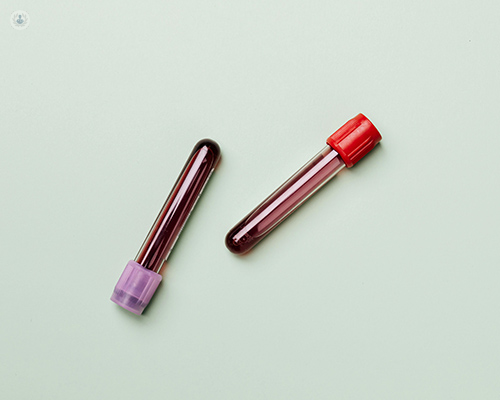Luteinising hormone (LH) analysis
What is analysed?
Luteinising hormone (LH) is a hormone produced by the pituitary gland. It plays a crucial role in reproductive health, particularly in the regulation of the menstrual cycle in females and the production of testosterone in males.

What does the result indicate?
The result of an LH analysis indicates the level of this hormone in the bloodstream. Abnormal levels can signify various reproductive health issues, including infertility, irregular menstrual cycles, and hormonal imbalances.
Why is this analysis conducted?
LH analysis is conducted to assess the functioning of the reproductive system, diagnose infertility, monitor fertility treatments, evaluate pituitary gland function, and diagnose conditions such as polycystic ovary syndrome (PCOS) and hypogonadism.
When should it be conducted?
An LH analysis is typically conducted as part of fertility evaluations, when investigating irregular menstrual cycles, assessing puberty development, and diagnosing hormonal imbalances.
What sample is required?
A blood sample is required for LH analysis. The sample is usually drawn from a vein in the arm.
Is any prior preparation necessary?
No specific prior preparation is usually necessary for LH analysis. However, it's essential to follow any instructions provided by the healthcare provider, such as fasting requirements or timing of the test in relation to menstrual cycles.
What are the normal values?
Normal LH levels vary depending on factors such as age, sex, and menstrual cycle phase. However, generally, normal levels fall within the following ranges:
|
Population |
Normal Range (IU/L) |
|---|---|
|
Males |
1.8 - 8.6 |
|
Females (follicular phase) |
2.4 - 12.6 |
|
Females (midcycle/ovulation phase) |
14.0 - 96.6 |
|
Females (luteal phase) |
1.0 - 11.4 |
|
Postmenopausal Females |
15.9 - 54.0 |
What does it mean to have altered values?
- High levels of LH may indicate conditions such as polycystic ovary syndrome (PCOS), primary ovarian failure, or menopause.
- Low levels of LH may suggest conditions such as hypothalamic dysfunction, pituitary gland disorders, or excessive exercise.
Understanding LH levels is crucial in diagnosing and managing various reproductive health conditions. If you have concerns about your LH levels, consult with a healthcare professional for proper evaluation and guidance.